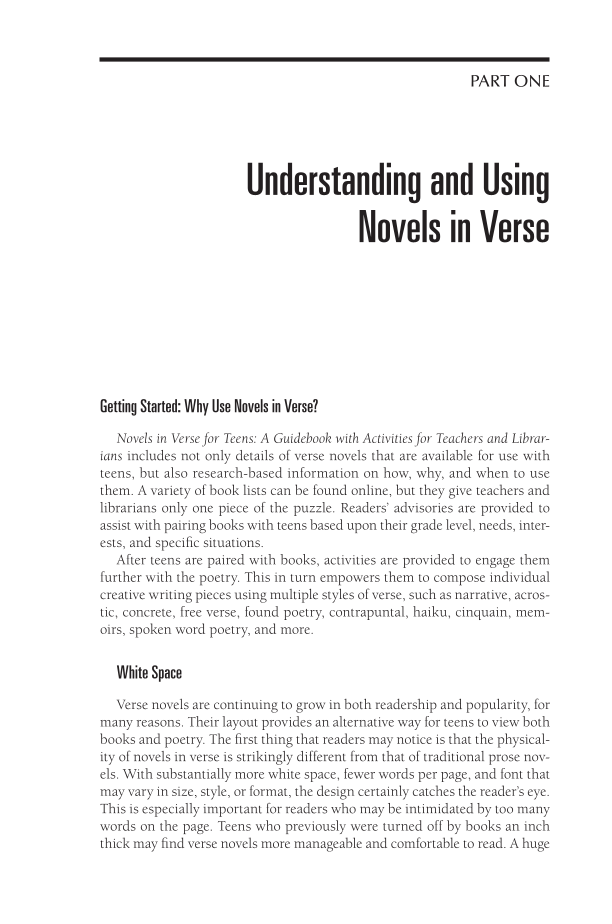PART ONE Understanding and Using Novels in Verse Getting Started: Why Use Novels in Verse? Novels in Verse for Teens: A Guidebook with Activities for Teachers and Librar- ians includes not only details of verse novels that are available for use with teens, but also research-based information on how, why, and when to use them. A variety of book lists can be found online, but they give teachers and librarians only one piece of the puzzle. Readers’ advisories are provided to assist with pairing books with teens based upon their grade level, needs, inter- ests, and specific situations. After teens are paired with books, activities are provided to engage them further with the poetry. This in turn empowers them to compose individual creative writing pieces using multiple styles of verse, such as narrative, acros- tic, concrete, free verse, found poetry, contrapuntal, haiku, cinquain, mem- oirs, spoken word poetry, and more. White Space Verse novels are continuing to grow in both readership and popularity, for many reasons. Their layout provides an alternative way for teens to view both books and poetry. The first thing that readers may notice is that the physical- ity of novels in verse is strikingly different from that of traditional prose nov- els. With substantially more white space, fewer words per page, and font that may vary in size, style, or format, the design certainly catches the reader’s eye. This is especially important for readers who may be intimidated by too many words on the page. Teens who previously were turned off by books an inch thick may find verse novels more manageable and comfortable to read. A huge
Document Details My Account Print multiple pages
Print
You have printed 0 times in the last 24 hours.
Your print count will reset on at .
You may print 0 more time(s) before then.
You may print a maximum of 0 pages at a time.





































































































































































